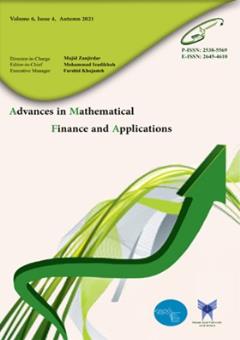-
-
-
Open Access Article
1 - The Role of Financial Instruments and Derivatives Disclosure on the Excess Return and Company Value Based on Iran Accounting Standards
Mojtaba Chavoshani Babak Jamshidinavid Mehrdad Ghanbari Afshin BaghfalakiBased on IFRS laws, British companies have started providing their reporting systems according to International Standards Requirements regarding disclosing their financial derivatives since January 2005. In 2013, Iran revised its Accounting Standard No. 15 to include th MoreBased on IFRS laws, British companies have started providing their reporting systems according to International Standards Requirements regarding disclosing their financial derivatives since January 2005. In 2013, Iran revised its Accounting Standard No. 15 to include the derivative instruments. The present study aims at investigating the effect of this revision on financial derivatives and instruments, and the effect of earning management on the relationship between the level of financial derivatives and instruments and risk-adjusted discount rates. From generalized least squares regression panel data, it was found that based on the first hypothesis, the companies which disclose their financial instruments based on No. 15 internal standard have a lower risk- adjusted discount rate, implying an increase in profit and a price rise in the markets. The findings also confirmed the second hypothesis, attesting to the effect of earning management on the relation-ship between financial derivatives and instruments disclosure and excess return. Findings of the research third hypothesis represent that there is a direct meaningful relationship between disclosure level of financial instruments and company value. So, it can be concluded that instruments` disclosures and financial derivatives can decrease risk-adjusted discount rate and increase companies` values in terms of standard number 15. Manuscript profile -
Open Access Article
2 - The role of aggregate cost stickiness in unemployment rate prediction
Naser Riyahinasab Babak Jamshidinavid Alireza Moradi Mehrdad GhanbariPredicting macroeconomic indicators is very important for policymakers and economists. Unemployment is one of the key indicators of macroeconomics that has adverse economic and social consequences. So far, many models have been proposed to predict this variable, but mod MorePredicting macroeconomic indicators is very important for policymakers and economists. Unemployment is one of the key indicators of macroeconomics that has adverse economic and social consequences. So far, many models have been proposed to predict this variable, but models in which accounting information was used to predict unemployment rate were ignored. The purpose of this paper is to investigate the relationship between aggregate cost stickiness, as one of the known variables in accounting, and unemployment rate. To this end, seasonal macro level time series data of Tehran Stock Exchange (TSE) and macroeconomic data are analyzed in two stages from 2008:2 to 2018:1. In the first stage, the relationship between these two variables is determined by specifying a linear regression model that is estimated using the OLS method. To investigate the predictive power of this model, the RMSE criterion was estimated in two scenarios with and without aggregate cost stickiness. Secondly, the reaction of the unemployment rate in response to a shock from aggregate cost stickiness is estimated by a Vector Autoregressive (VAR) model and the share of this variable is measured in the fluctuations of unemployment rate. The results show that aggregate cost stickiness improves the forecast of unemployment rate in the horizon previous. Also, the shock of aggregate cost stickiness explains about 6.5 percent of unemployment rate fluctuations. Manuscript profile
List of Articles Mojtaba Chavoshani
-
The rights to this website are owned by the Raimag Press Management System.
Copyright © 2021-2024


